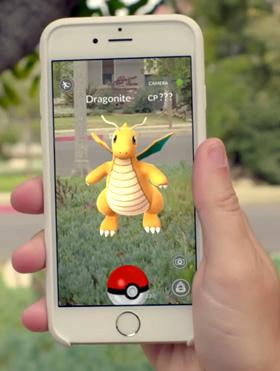 Sponsored locations will soon provide a new revenue stream for Pokémon Go. Sound familiar? Earlier this year, Google said it would start offering advertisers
sponsored local search ads on Google Maps.
Sponsored locations will soon provide a new revenue stream for Pokémon Go. Sound familiar? Earlier this year, Google said it would start offering advertisers
sponsored local search ads on Google Maps.
Google spun off Niantic
Labs, which gained its fame through the mobile game Ingress, in August 2015. Now along with The Pokémon Company and Nintendo, the companies aim to monetize the game through location-based
ads.
The sponsored locations would give physical locations the ability to create "Lure Modules," which attracts players to find a character at a specific location. Niantic CEO John Hanke
told The Financial Times that companies will pay to become locations within the virtual game board to spur foot traffic in physical stores, but he didn't say whether Google provides the
mapping software and ad technology to make that happen.
advertisement
advertisement
The app asks for an email address when signing in for the first time, so cross-media ad targeting in email based on location will likely
become an option.
Some 80% of the mobile gaming industry's $39 billion in global revenue now comes from in-game advertising, according to Bloomberg.
Pokémon Go players
traverse the physical world with help from a digital map looking for the animated characters that appear on a mobile phone screen. The game fuses augmented reality (AR) with the physical world. The
idea is to overlay images in a person's view on the digital screen.
Any business can become a Pokémon Go destination. Queens, New York, L'inizio's Pizza Bar spent about $10 on Lure
Modules and saw food and drink sales spike by more than 30% this past weekend, per Bloomberg.
Niantic Labs released the beta version of Pokeman Go in late May. Taykey, which analyzes hundreds of millions of data points daily to identify
trends, said it saw a massive shift in June and July in the demographic profile of people talking about the Pokemon franchise.
Prior to the game launch, the audience was 80% male, but since
the audience split almost evenly between males and females.
The core fan base shifted older as well, from nearly 70% being 24 and younger to now being spread across the age groups. The data
points to about 10% of individuals ages 45 to 54, and 8% age 65+.